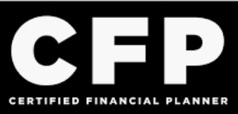
Retirement Realities: A Guide for Parents Navigating Financial Priorities
In the journey of parenting, the aspiration to provide the best possible future for our children often guides our decisions, especially when it comes to education. This idea drives many parents to prioritize their child’s education over other financial goals, including their own retirement savings. However, this well-intentioned strategy can end up negatively affecting both you and your child in the long term. In this blog, we will find a balanced approach to this challenge, emphasizing that while investing in education is crucial, it should not come at the cost of your future comfort and financial security.
Investing in Education Without Sacrificing Retirement
In the landscape of family finances, two of the most significant goals can be in direct competition: funding your child’s education and saving for your retirement. However, with strategic financial planning and informed decision-making, it is possible to strike a balance that supports your child’s educational future without compromising your retirement security.
Exploring Financial Options for Education
Before diverting retirement savings to fund education, explore all available options for reducing the financial burden of your child’s education. Financial aid, scholarships, and grants can significantly lower education costs without impacting your retirement savings. Encourage your child to participate in the search – many smaller, lesser-known opportunities are often overlooked.
Additionally, in the initial college search, consider the value of education at more affordable institutions. Community colleges and public universities can provide excellent education at a fraction of the cost of private institutions, allowing your child to graduate debt-free or with minimal loans to repay.
Techniques for Managing Multiple Financial Needs
- Create a Comprehensive Financial Plan: Work with a financial advisor to develop a plan that includes both retirement savings and education funding. This plan should consider your current financial situation, projected income, and potential investment growth.
- Utilize Tax-Advantaged Savings Accounts: Invest in accounts like 529 plans for education and IRAs or 401(k)s for retirement. These accounts offer tax benefits that can enhance your savings growth.
- Prioritize High-Interest Debt Elimination: Before aggressively saving for education or retirement, focus on eliminating high-interest debt. This approach frees up more resources in the long run for both education and retirement savings.
- Practice Incremental Savings: Small, consistent contributions to both education and retirement savings funds can accumulate significantly over time. Even if you can’t contribute large amounts, regular investments can grow through compound interest.
- Encourage Financial Independence for Your Child: Teach your child about the value of money and the importance of contributing to their education. Part-time jobs, internships, and co-op programs can provide valuable experience and financial contributions toward their college or university expenses.
Creating an Education Savings Plan
The key to success for parents lies in adopting a holistic approach to financial planning that considers immediate and long-term retirement needs. Here are additional strategies to help maintain financial comfort in the present while locking in a secure retirement for your future.
Start Early with a Dual-Focused Savings Plan
- Early Planning: Begin saving for both education and retirement as early as possible. The power of compound interest means that even small amounts saved today can grow significantly over time. Consider opening dedicated savings accounts for both goals.
- Automatic Contributions: Set up automatic contributions to both savings accounts. This “set it and forget it” strategy ensures consistent savings over time and reduces the temptation to redirect funds to other uses.
Smart Borrowing Strategies
- Federal Loans: If borrowing is necessary, prioritize federal student loans over private loans. Federal loans often have lower interest rates and more flexible repayment options, including income-driven repayment plans.
- Limit Borrowing: Aim to limit borrowing to the expected first year’s salary in your child’s chosen field, if possible. This guideline ensures loan repayments remain manageable relative to future income. Remember: You can borrow for education, but you can’t borrow for retirement.
Balance and Flexibility
- Review and Adjust Regularly: Review your financial plan and adjust contributions to education and retirement savings as your financial situation changes. Income increases should be allocated proportionately to both goals to maintain a balanced approach.
- Professional Advice: Consider consulting with a financial advisor to tailor a strategy that fits with your unique financial situation and goals. A professional can offer insights and strategies to optimize savings and investment choices.
Overcoming Bias: Choosing Schools Wisely
In our quest to provide the best opportunities for our children, it’s easy to fall prey to biases and stigmas that equate success with attendance at top-tier, often Ivy League, institutions. However, as Malcolm Gladwell insightfully explores in David and Goliath: Underdogs, Misfits, and the Art of Battling Giants, a student’s success is not always dictated by the assumed superiority of resources or prestigious affiliations.
This principle applies directly to educational choice, challenging the myth that only the most elite schools can pave the way to success. Additionally, pushing your child to go to the “best” school rather than a school that is best for them can negatively impact their confidence and attitude toward their educational future. Here are some tips on choosing schools with these considerations in mind.
Strategies for Wise School Selection
- Consider the Fit: The best school for any given student should align with their academic interests, learning style, and personal growth objectives. An environment where a student feels engaged and supported will likely foster success more than a prestigious name alone.
- Long-Term Financial Considerations: Choosing a less expensive school can alleviate the burden of student loans, allowing graduates more freedom to pursue their passions, start businesses, or travel, rather than being tied to high-debt repayment.
- Encourage Independence and Decision-Making: Involve your child in the school selection process. Encouraging them to research, visit campuses, and weigh the pros and cons of each option fosters independence, boosts their confidence, and ensures that their educational path aligns with their personal goals and values.
Overall, the key takeaways for parents balancing education and retirement savings are a) the importance of balanced, well-informed decision-making and b) the recognition that success is not a one-size-fits-all outcome defined by “prestigious” educational institutions. Investing in your child’s education is undoubtedly important, but not at the expense of jeopardizing your retirement. As you lay the groundwork for your own and your child’s respective futures, remember that the true wealth of your legacy lies in the strength of the foundation you have built together.
If you’re looking for more guidance, connect with 3 Financial Group! We are ready to assist you in ensuring a brighter future for both you and your children.
#COD00000128/March 2024


